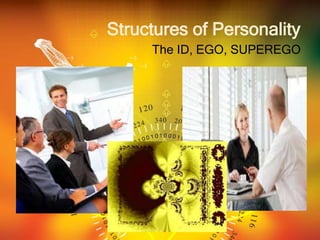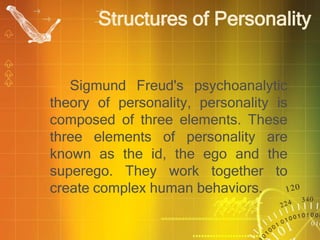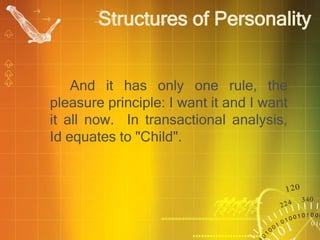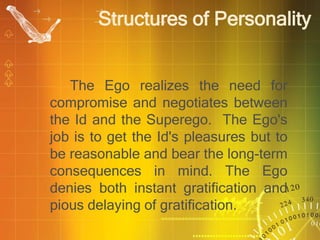Sigmund Freud proposed that personality is composed of three elements - the id, ego, and superego. The id operates based on the pleasure principle, seeking instant gratification. The ego develops to balance the id with reality. The superego incorporates societal values and rules to create anxiety if violated.
Jean Piaget identified four stages of cognitive development from birth through adulthood - sensorimotor, preoperational, concrete operational, and formal operational. During these stages, children progress from learning through senses to abstract logical thought.
Erik Erikson proposed eight stages of psychosocial development across the lifespan. At each stage, individuals must resolve crises to develop virtues like trust, autonomy, and integrity







































